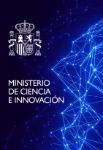Impact
The different PERTE Aerospace investments and actions are designed to generate significantly positive impacts of a different nature. It is worth highlighting the strengthening and training of the Spanish aerospace industry, which will contribute to increasing its competitiveness and improving its position in the global environment in which it operates.
According to Oxford Economics, the social rate of return generated by aeronautical R&D programmes in GDP is 70% per year. This means that for every 100 euros invested in aeronautical R&D, GDP increases by 700 euros in 10 years. Since the aeronautical sector accounts for 77.4% of the aerospace sector, it is reasonable to assume a similar social rate of return for all aerospace R&D&I activity.Aplicando la citada tasa de retorno social de Oxford Economics a la inversión total en I+D+I aeroespacial de 4534 M € inducida por este PERTE se estima en 10 años un incremento del PIB de 31 735,6 M €. Asumiendo que el PIB registre un crecimiento anual del 2 % en estos 10 años se estima el impacto en el PIB del PERTE aeroespacial en el 0,22 %.
Applying the above-mentioned social rate of return from Oxford Economics to total investment in aerospace R&D of €4.534 bn induced by this PERTE, an increase in GDP of €31.735 bn is estimated in 10 years. Assuming that GDP records an annual growth of 2% in these 10 years, the impact of PERTE Aerospace on GDP is estimated at 0.22%.
Considering the TEDAE direct invoicing/direct employment ratio, the total PERTE investment of €4.534 bn has an impact on direct employment of 1,899 highly qualified jobs (R&D&I and related activities).
Another number of jobs derived from the estimated GDP increase of €31.735 bn induced by PERTE could be added to this figure in the long term. Considering the economic impact ratio of TEDAE invoicing/total employment in 2020 from the KPMG report should double in 10 years, impact on employment would be 14,079 jobs, of which 4,607 would be direct and 9,471 indirect.







